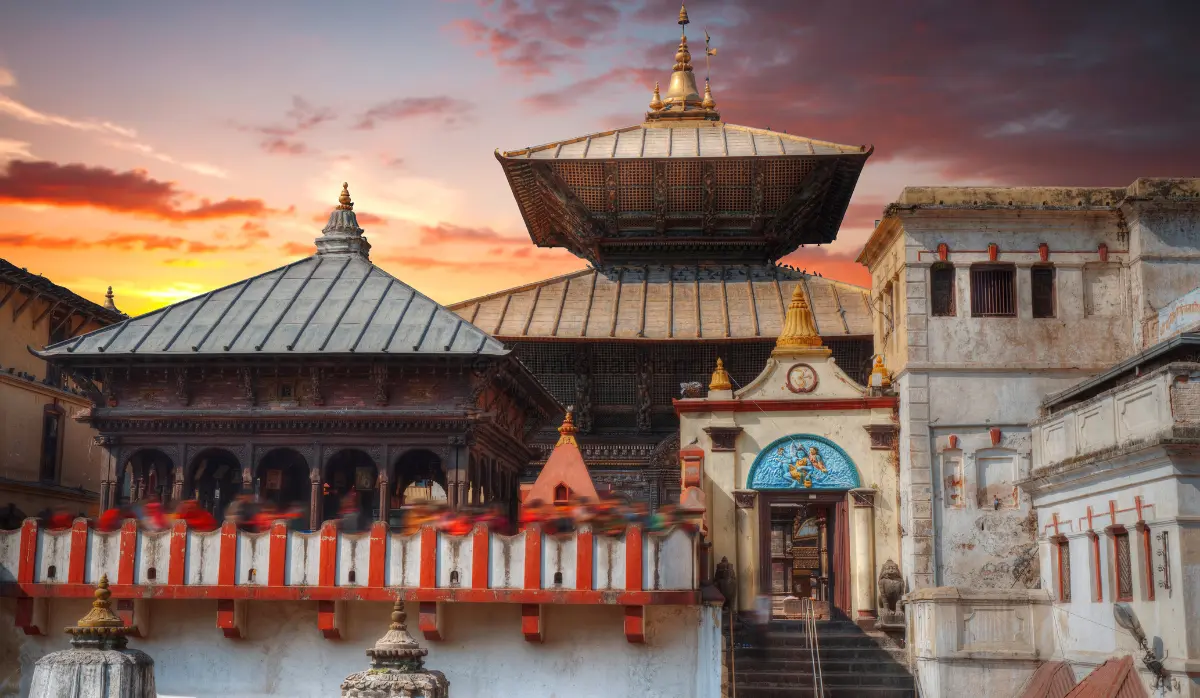Categorized
Know About Pashupatinath Temple
The Kathmandu Pashupatinath Temple in Nepal forms one of the holiest Hindu temples in the world and is dedicated to Lord Shiva. It is a perfect tourist attraction to visit as it is regarded as a UNESCO World Heritage site, and is a symbol of devotion, culture, and heritage. Nepal, India, and the whole world are also bringing their millions of pilgrims and visitors here every year who are coming to pray, observe the sacred, and feel the divine aura of this place. Pashupatinath, still a living embodiment of the spiritual essence of Nepal, is a site of the holy Bagmati River.
A Temple Steeped in History
Pashupatinath dates back almost 200 years. It existed as early as 400 A.D, as written records testify, although there is an even older legend. Sacred lore says that one time, Lord Shiva disguised himself as a deer and inhabited the forest of Bagmati. On the occasion when the real shape of the deity was disclosed, his antlers remained on the earth, and gradually the place was venerated as Pashupatinath -Lord of the Life of All Beings.
The temple is a masterpiece of the Nepali pagoda style architecturally. Its golden two-tiered roof, carved wooden rafters, and silver-plated doors are the artistic brilliance of the Malla period. It has a sacred Shiva lingam in the middle, having four faces, representing the ability of Shiva to be everywhere. The temple has remained a stronghold of religion and worship despite the great tragedies, such as earthquakes.
Significance in Hindu Religion.
To Hindus, Pashupatinath is not only a temple but the entrance to enlightenment. It is also included as one of the twelve Jyotirlingas, the most sacred of the shrines of Lord Shiva. According to Pilgrims, going to Pashupatinath purifies the soul of sins and assists in achieving moksha, or spiritual release from the rebirth cycle.
During the Maha Shivaratri, which is the festival of Lord Shiva, the temple is at its largest. Thousands of sadhus and yogis, many of them smeared in ash, come together on this night, all over South Asia. During the night, the process is repeated with fasting, prayers, meditation, and rituals, and an air full of spiritual energy is created.
The Sacred Bagmati River
The river that flows near the temple is called Bagmati, which is as holy as the temple itself. It is deemed divine, and a ceremony on its banks is thought to help the departed soul reach the afterlife. The ghats (steps of stone) of the river are utilized during cremation processes, and families utter their last goodbyes with their prayers and offerings.
The everlasting Hindu philosophy of life, death, and rebirth is expressed in this close connection of Pashupatinath and Bagmati. One immersion in the river or a sacrifice of flowers to the rivers is thought to bring very great spiritual value.
Cultural and Spiritual Meaning
Not only is Pashupatinath a religious site, but it is also a cultural pillar of Nepal. Festivals such as Teej, Haritalika, and Bala Chaturdashi are held in the temple, which unite communities in their religious worship and festivities.
Another experience that is not easily forgotten is the Bagmati evening aarti. The priests do rituals using oil lamps, conch shells, and chants as hundreds of worshippers assemble by the riverbank. The flickering lights in the water produce a divine view, as the faith and culture are combined in a stunning manner.
The Energy of Pashupatinath
Entering the temple complex is like entering a different world. Bell tolling, incense burning, sadhus in meditation, and unceasing chanting all make the atmosphere of calmness and sanctity. Tourists tend to talk and say that it is a life-changing experience, and they are both serious Hindus and mere tourists who have come to have a better spiritual experience.
Pashupatinath Travel Information
When you are going to Pashupatinath, you must remember the following points:
- Temple Entry: Only Hindus can get into the main sanctum, yet non-Hindu visitors can still get to see the temple premises and view the rituals externally.
- Dress Code: Modest dresses are advisable. It is a sign of respect to cover your shoulders and knees at this holy place.
- Photography: Photography is not permitted within the main premises of the temple, but may be done in the outer complex and along the ghats of the Agmati.
- When to visit: It is best to visit in the early mornings or evenings when rituals can be witnessed. Festivals are the most lively during Maha Shivaratri in February/March, but it is also the busiest.
- Donations and offerings: The believers usually offer flowers, fruits, and bel leaves to Lord Shiva. The contributions are used in the maintenance of the temples and community services.
- Local Guides: A local guide can assist you in learning the myths, symbolism, and concealed information of the temple that you could have otherwise been unaware of.
Rudraksha Bhandar: Home with the Blessings.
It is not possible to visit Pashupatinath without having seen the sacred Rudraksha, the divine bead of Lord Shiva. To the people who want authenticity, the world has the largest collection in Rudraksha Bhandar, which was set up in 1973, and is located close to the temple. Each bead is well-procured and certified, hence the devotees are given authentic spiritual treasures with divine power.
The store offers meditation, curing, and spiritual development equipment in the form of rare multi-faced Rudraksha and malas, Gauri Shankar Rudraksha, and some sacred Shaligrams. Its background of reliability and integrity makes Rudraksha Bhandar aid the followers in taking a bit of the power of Pashupatinath home and continuing their spiritual experience outside of the temple.

